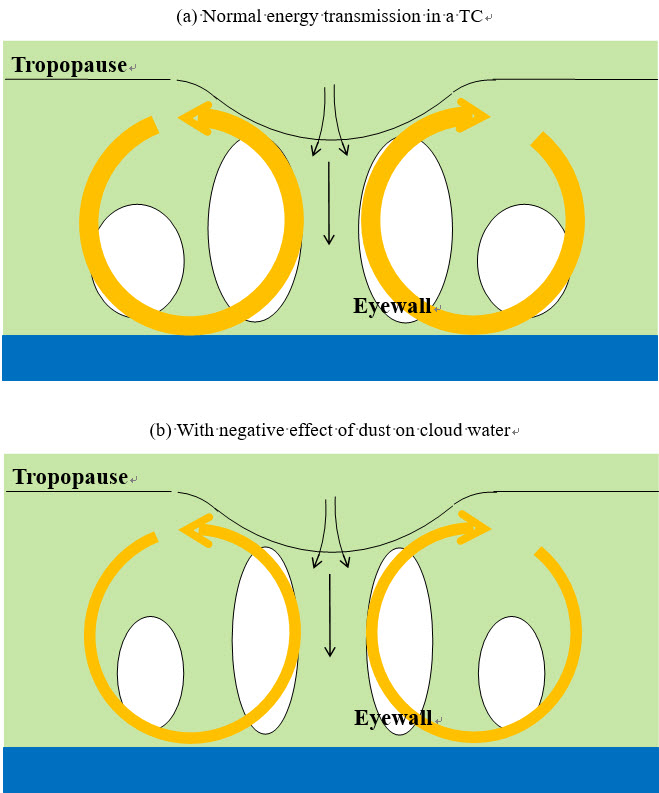The thermodynamic state of the tropical atmosphere plays an important role in the development of tropical cyclone (TC) intensity. A TC imports thermodynamic energy from ocean–air heat and moisture fluxes and exports heat aloft at the much colder upper troposphere, through a radially and vertically directed overturning circulation in a TC. The work done through this cycle drives the TC’s winds.
A negative response of cloud water in the lower troposphere to dust aerosol optical depth (AOD) has recently been reported in Atmospheric and Oceanic Science Letters by Dr. Zhenxi Zhang from the Inner Mongolia University of Technology, Hohhot, China, by analyzing MERRA-2 reanalysis data and GCM simulations from CMIP6.
“The explanation of this response could be that dust aerosols absorb solar radiation, promoting the evaporation of clouds. In principle, this aerosol-driven vaporization modification could affect the enthalpy of the air surrounding a tropical cyclone”, explains Dr. Zhang.
According to Zhang’s study, a negative association between eastern Pacific TC intensity in offshore regions and dust AOD for the years 1980–2019 was also found. “The changes in TC intensity related to dust AOD conditions should be a consequence of the anomalous enthalpy of the air surrounding a TC caused by the negative effect of dust on cloud water”, concludes Zhang.

Schematic of the negative effect of dust aerosols on the energy transmission of TC. (Credit: Zhenxi Zhang)
Citation:
Z. Zhang and W. Zhou. Influence of dust aerosols on eastern Pacific tropical cyclone intensity, Atmospheric and Oceanic Science Letters, https://doi.org/10.1016/j.aosl.2020.100028.
|